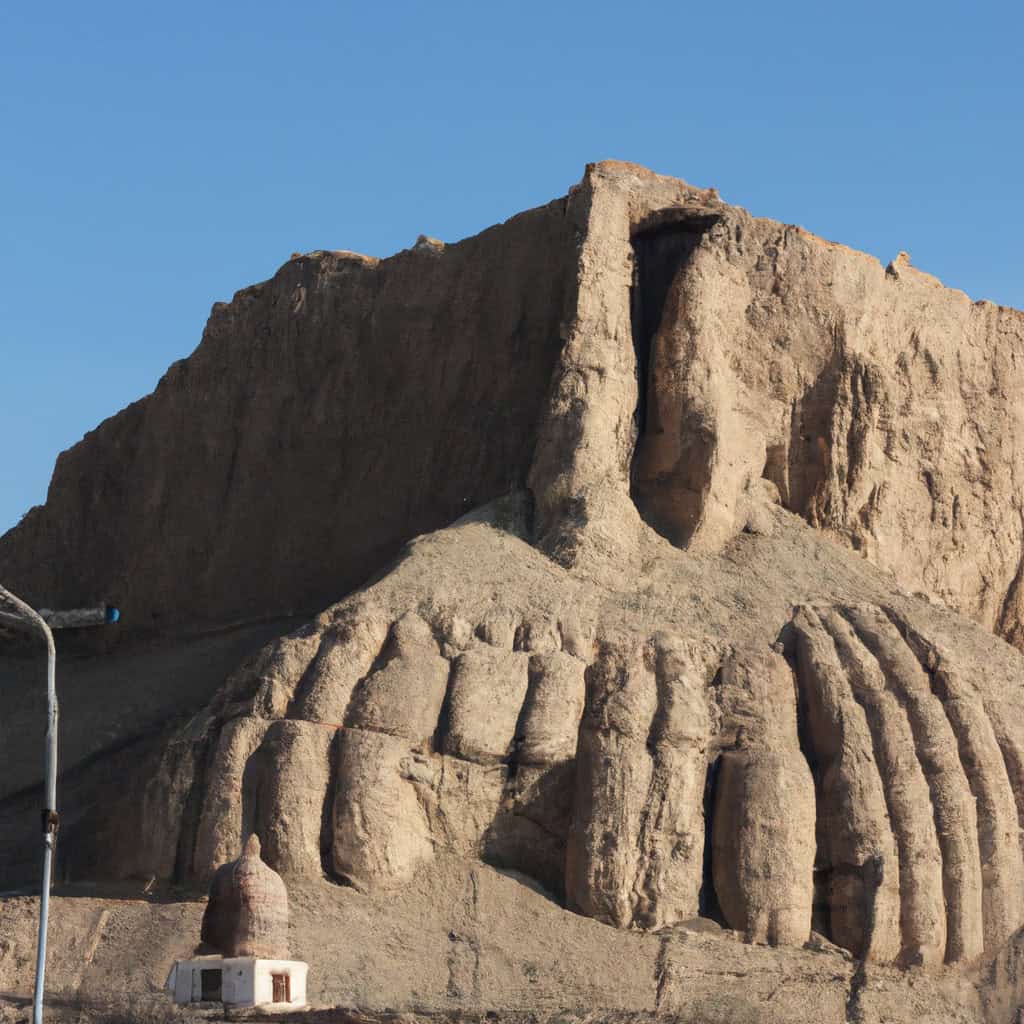Shahr-e Zuhak in Bamiyan is one of many fascinating sites that both foreign visitors and local tourists can explore while they visit Afghanistan and exploring Bamiyan Province. This remarkable wonder, also known as The Red City, holds immense historical and cultural significance that stretches back over centuries. Nestled in the rugged landscape, Shahr-e Zuhak offers a unique blend of natural beauty and ancient archaeology that captures the essence of the Afghan past. The site is a testament to the diverse history of the region, witnessing the rise and fall of many great empires, and standing resilient through the passage of time.
Shahr-e Zuhak Most Important Events
- Genghis Khan Invasion: One of the most impactful events in the history of Shahr-e Zuhak was when the Mongol warlord Genghis Khan invaded in 1221. The devastation resulted in an extensive rebuilding process, which dramatically transformed its landscape.
- Buddhist Presence: Another noteworthy event is the influence of Buddhism between the second and ninth centuries, as evidenced by the numerous caves and alcoves that were carved into the hillside for meditation and worship.
- UNESCO Recognition: An important development enhancing Shahr-e Zuhak’s legacy was its recognition as a UNESCO World Heritage Site, bringing international attention and sparking efforts for its preservation.
History of Shahr-e Zuhak in Bamiyan
Shahr-e Zuhak’s rich past reflects the variegated history of Afghanistan itself. Evidence suggests that the site was in use from as early as the 6th century, blossoming into a fortified city containing royal palaces, temples, and housing for ordinary citizens under the reign of the Ghorid Dynasty in the 12th century.
The 13th century saw this bustling city face horrific destruction at the hands of the Mongol army, led by Genghis Khan, following the murder of his grandson. Despite the devastation, Shahr-e Zuhak bore the brunt of the invasion and gradually recovered, witnessing its structures rebuilt, adding a new chapter to its fascinating story.
The 20th and early 21st centuries brought further challenges for Shahr-e Zuhak. During the Afghan civil war, the site served as a military stronghold, leading to further damage. However, recent restoration and conservation efforts, namely its designation as a UNESCO World Heritage site, have played a pivotal role in highlighting its historical and cultural significance.
Why It’s Important to Afghan History
Shahr-e Zuhak is not just an archaeological site; it is a significant chapter in Afghanistan’s history book. It represents the resilient spirit of the Afghan nation, withstanding invasions, wars, and harsh weather, yet standing tall with its heritage intact. Its recovery and restoration throughout history illustrate the determination and resourcefulness of the Afghan people.
Moreover, the culture and socio-political changes Shahr-e Zuhak has witnessed render it a living history museum. Every layer of this site, from its Buddhist roots to its Ghorid fortifications, paints a unique phase in Afghanistan’s history, making it immensely pertinent.
Why to Visit Shahr-e Zuhak
Visiting Shahr-e Zuhak is akin to time travel. The grandeur of its forts, beauty of surrounding plains, and the aura of its past, make it a must-visit. The detailed carvings on the interior of the sites tell stories of a bygone era, while the panoramic view of Bamiyan valley from the hilltop is breathtaking.
Accessible by a short car ride from the town of Bamiyan, the best time to visit Shahr-e Zuhak is during the spring months when the surrounding landscapes burst into life with vibrant colors.
- The red-hued forts at sunrise are a sight to behold.
- Taking a guided tour provides valuable insights into the site’s long history.
- The panoramic view from atop the hill is mesmerizing.
- Exploring caves that once served as Buddhist cells is a unique experience.
- The on-site museum offers interesting artifacts and information.
Cultural & Tourist Significance
Shahr-e Zuhak’s significance extends beyond its historical value. It’s a place where you can engage with culture, architecture, and spirituality in a way that’s genuinely unique. The Buddhist influence evokes a sense of reverence, and the sheer ingenuity of creating such a city in rugged terrains inspires awe.
As a tourist destination, Shahr-e Zuhak is a treasure trove. Visitors can explore a range of experiences, from delving into the ruins and caves to hiking the nearby trails and watching the memorable sunrise over the ancient forts. The archaeological site provides a rich education on Afghanistan’s past, suitable for both historical enthusiasts and casual tourists.
Furthermore, the consistent efforts to preserve and restore the site emphasis its worth in the eyes of the world. Shahr-e Zuhak is not just another historical site; it is a symbol of heritage preservation and cultural resilience.
Interesting Facts
For all its fame, there are many lesser-known aspects of Shahr-e Zuhak that enhance the intrigue. Did you know its name translates to ‘Red City,’ referring to the reddish-brown rock it was built upon?
People often talk about the Mongol invasion, but few know of the Zoroastrian influence at Shahr-e Zuhak. Remnants of fire temples discovered here hint towards the prevalence of Zoroastrianism even before Buddhism arrived.
Lastly, exploring the Red City, one can’t help wonder why such a spot was selected for building. The location was, in fact, strategic, offering excellent views of the valley, making it an advantageous defense against invaders.
Whether you are a history buff, adventure seeker, or just an avid traveler, Shahr-e Zuhak in Bamiyan, Afghanistan, offers an unparalleled experience with its rich history, resilient architecture, and captivating atmosphere. It’s a testament to the human spirit, the power of preservation, and the continuous pursuit of knowledge.

